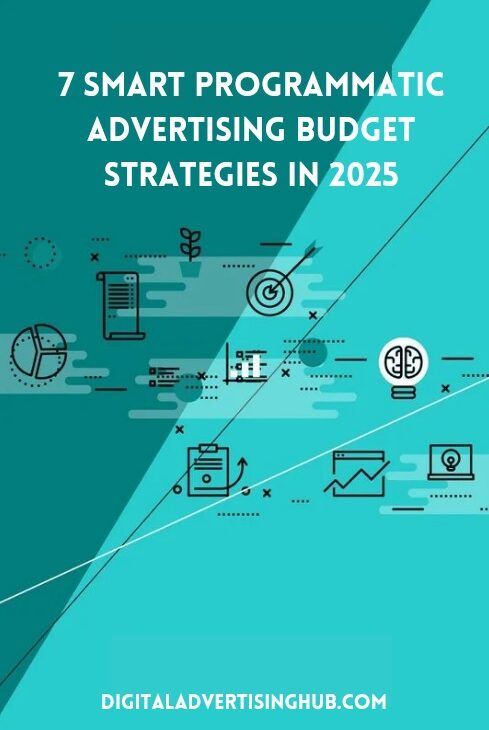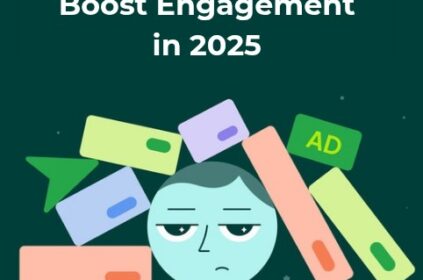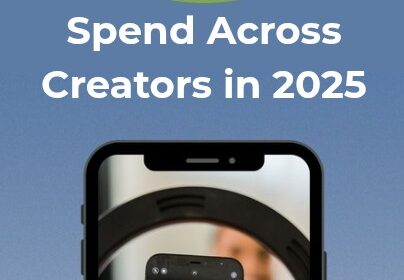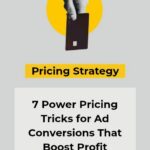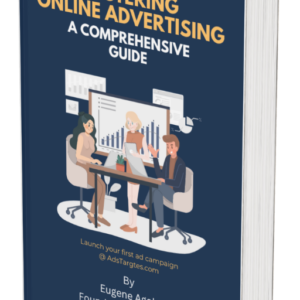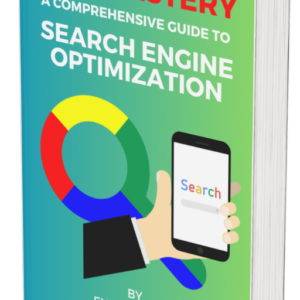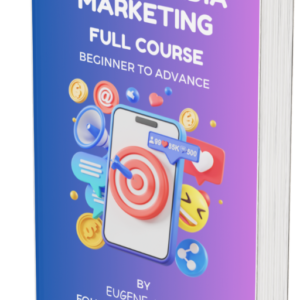Programmatic advertising has evolved far beyond automated bidding. In 2025, it’s a battlefield of algorithms, audience insights, and budget precision.
Brands no longer win by outspending competitors — they win by outsmarting them. The advertisers that thrive are the ones who treat every impression like an investment, not an expense.
And here’s the truth — programmatic budgets can spiral out of control fast if you don’t have a system.
Between rising CPMs, multi-channel bidding, and unpredictable audience shifts, even seasoned media buyers are rethinking how they allocate every dollar.
That’s where smarter programmatic advertising budget strategies come in.
These strategies help you stretch your spend, focus on high-performing segments, and make the most of AI-driven optimization tools without blowing your ad budget.
#1. Reevaluate How You Allocate Spend Across Channels

Programmatic advertising in 2025 isn’t just about automation anymore — it’s about optimization.
The first thing smart advertisers are doing this year is rethinking how they distribute spend across channels.
Gone are the days when most of your programmatic ad budget sat inside a single display network.
With connected TV, digital audio, in-game placements, and mobile inventory expanding fast, diversified allocation is one of the most powerful programmatic advertising budget strategies to start with.
Advertisers are now using real-time performance data to shift money dynamically between these environments.
When display CPMs rise, more budget moves to video. When mobile CTR spikes, funds flow there instead.
It’s all about maintaining performance equilibrium without overspending in one medium.
The smartest teams now use unified DSP dashboards that track multi-channel impressions, conversions, and CPMs in one view.
This transparency allows them to rebalance spend daily, not monthly. It’s also how they cut waste from underperforming segments while feeding higher-value inventory automatically.
In short, the era of “set-it-and-forget-it” campaigns is long gone.
Advertisers embracing flexible allocation frameworks are outperforming static budgets by wide margins.
If you want consistent ROI growth, make data-driven reallocation your starting point for 2025.
#2. Prioritize Audience Quality Over Quantity
The second of our programmatic advertising budget strategies focuses on audience quality.
The biggest waste of ad dollars still happens when brands chase impressions rather than meaningful engagement.
Programmatic platforms now give buyers granular audience insights — demographics, purchase intent, content affinity, even emotional tone analysis — yet too many still bid broadly.
In 2025, the winning advertisers are moving in the opposite direction: smaller, sharper segments that convert.
For instance, instead of targeting “fitness enthusiasts,” they might bid only on audiences actively researching recovery supplements.
That micro-focus drives higher post-click conversions at lower CPMs.
Audience layering (combining multiple first-party and contextual signals) is also proving invaluable.
By merging CRM data with behavioral triggers — like users who viewed your pricing page within the last week — advertisers build precision audiences that stretch budget further.
Another underrated tactic is negative audience exclusion. It’s as important to know who not to target as who to target.
Excluding unqualified or unresponsive segments reduces wasted impressions instantly.
When your spend goes only to those most likely to buy, your campaigns do more with less.
Audience refinement, not reaching inflation, defines the new efficiency frontier in programmatic advertising.
#3. Balance Automation with Human Oversight
Automation is the backbone of programmatic media buying, but it’s not infallible. Smart advertisers know that AI bidding systems can’t always interpret brand nuance, contextual relevance, or seasonal timing perfectly.
That’s why balancing automation with human expertise ranks among the most impactful programmatic advertising budget strategies right now.
Many top advertisers now use semi-automated bidding — letting machine learning handle volume optimization while keeping humans in control of brand safety and creative testing.
This hybrid model prevents budget erosion caused by over-automation.
For instance, AI might overbid on a keyword or placement with high click-throughs but low conversions.
Human review ensures that ROI, not raw engagement, drives budget flow. Similarly, manual audits every few days help confirm that programmatic placements align with your brand tone and compliance rules.
It’s also worth noting that manual oversight aids long-term learning.
Teams that review their DSP data weekly gain intuition for what’s working — something AI can’t replicate.
That intuition compounds over time, sharpening every future spend decision.
In 2025, technology is your assistant, not your strategist. Let algorithms handle the heavy lifting, but keep human judgment at the center of every major spend call.
#4. Invest in First-Party Data and Contextual Targeting
As third-party cookies fade out globally, first-party data has become the single most valuable input for programmatic bidding.
Brands that own and nurture their customer data are already spending smarter. This shift makes first-party integration one of the most essential programmatic advertising budget strategies of 2025.
Rather than paying premiums for third-party audience segments (which often overlap and inflate spend), advertisers are now enriching their first-party data sets — emails, purchase history, browsing behavior — to power internal look-alike models.
These audiences tend to outperform generic targeting because they stem from real customer intent.
Meanwhile, contextual targeting has resurged as the privacy-compliant twin of behavioral tracking. Instead of targeting individuals, advertisers now target environments.
If you sell travel insurance, you bid on articles about long-term travel or visa tips. This delivers relevance without surveillance, stretching your ad budget under tighter privacy laws.
Pairing first-party data with contextual logic gives advertisers a double advantage: precision and privacy.
It’s how the most efficient spenders are staying compliant while sustaining growth.
If you haven’t yet built a solid first-party data ecosystem, start now. Every future optimization — from audience creation to lifetime value tracking — depends on it.
#5. Test, Learn, and Scale with Incremental Budgets
You don’t need to overhaul your entire budget to innovate. In fact, some of the most profitable advertisers in 2025 are those running incremental testing frameworks.
This is one of the programmatic advertising budget strategies that separates high-efficiency teams from average ones.
Here’s the principle: allocate 10–15% of your monthly spend exclusively to experiments.
This could mean testing a new DSP, exploring digital out-of-home placements, or trialing AI-generated creatives.
The goal isn’t perfection — it’s pattern recognition. Each test teaches you how different variables influence ROI.

Crucially, successful tests should scale immediately. When you find a creative format or audience combination that beats your baseline, funnel extra budget into it within days, not months.
That agility compounds returns and prevents stagnation.
Advertisers who treat testing as a fixed budget line item typically outperform those who only test when something breaks.
Structured experimentation uncovers optimization levers no report can predict.
It’s how modern advertisers future-proof performance: they let real data dictate every scaling decision.
#6. Strengthen Cross-Channel Attribution Models
The most common reason programmatic budgets underperform is poor attribution. Many brands still credit the last click — ignoring all the micro-touchpoints that led there.
In 2025, sophisticated advertisers are using multi-touch attribution models to map the true value of each channel and adjust spend accordingly.
This shift has made attribution one of the defining programmatic advertising budget strategies of the year.
Tools now measure not just impressions and clicks, but the full customer journey — from awareness on CTV to retargeting via mobile display.
Accurate attribution helps identify where incremental lift truly happens. Maybe your connected TV ads don’t convert directly but double your retargeting CTR.
That insight means you can justify continued investment there while trimming underperforming areas.
The ultimate goal is not perfect measurement — it’s actionable visibility. The more you know about each channel’s real contribution, the more precisely you can allocate future spend.
Cross-channel clarity doesn’t just save money — it prevents over-investment in the wrong places and creates a flywheel of continual optimization.
#7. Optimize Creative Performance with Real-Time Feedback Loops
The last and often most overlooked of the programmatic advertising budget strategies is creative optimization.
No matter how well you target or bid, bad creative still burns through budget faster than anything else.
In 2025, creative testing is as data-driven as bidding itself. Programmatic platforms now support real-time A/B/C testing at scale — showing multiple variations of copy, design, or call-to-action simultaneously and auto-shifting spend to top performers.
Advertisers are integrating creative intelligence tools that evaluate visual engagement, scroll-depth, and even facial emotion data from viewers.
These insights allow teams to fine-tune ad elements mid-campaign without pausing delivery.
Strong creative feedback loops translate directly into efficiency. The faster you identify what resonates, the faster your cost per conversion drops.
Think of creative as the front line of performance. Every pixel and every line of copy affects your ROI curve. When creativity and data collaborate seamlessly, every dollar stretches further.
Reinvesting Wins into Scalable Channels
One of the most underrated programmatic advertising budget strategies is learning how to reinvest efficiently.
When a campaign performs above average—maybe it’s a specific audience segment, time slot, or publisher—you don’t just celebrate the ROI; you use it to scale smartly.
The key is not to spread those additional funds across every channel, but to double down on proven pockets of efficiency.
In 2025, scalable reinvestment means identifying the top 20% of ad placements driving 80% of returns and routing new budget there.
For instance, if a particular DSP consistently delivers lower CPAs from connected TV or premium display, reinvest gains into those placements while maintaining testing budgets for emerging inventory.
Smart reinvestment compounds performance and keeps your spend lean. It’s about creating momentum through informed redistribution, not random expansion.
When done right, this approach builds a loop of sustainable efficiency — where every win fuels the next round of optimized growth without inflating your base spend.
Balancing Reach with Relevance Across Platforms
Maximizing reach is tempting, but relevance is what converts.
One of the most important programmatic advertising budget strategies today is learning how to balance both without burning through your ad budget.
Expanding across multiple DSPs, ad exchanges, and formats gives you wider exposure, but if your targeting and creative relevance drop, your effective CPM rises — fast.
The smarter move is to prioritize high-intent audiences and platform-specific optimization.

For example, allocate slightly more spend to video and native placements when promoting storytelling content, and reserve display for retargeting or awareness phases.
By matching platform purpose with funnel intent, advertisers ensure that every impression serves a role.
This strategy also means cutting underperforming channels faster.
In 2025, where contextual targeting and real-time data dictate ad value, aligning your spend with where your audience actually engages saves both money and effort.
Reach gives visibility, but relevance ensures impact — and that’s where sustainable ROI lives.
Tracking Budget Efficiency Beyond Clicks
Click-through rates might tell you who noticed your ad, but not who cared.
In 2025, advertisers tracking only surface-level metrics are missing half the picture — and wasting half their budget.
The next level of programmatic advertising budget strategies involves measuring efficiency beyond clicks.
Metrics like conversion lift, attention time, viewability, and post-click engagement show where your money is actually driving meaningful results.
Instead of pouring spend into ads with high CTR but low retention, track which placements hold audience attention and lead to deeper interactions.
Use attention-based analytics and engagement scoring to refine your cost allocation.
For example, a video ad with lower clicks but higher watch-through rates might generate stronger brand lift over time than a flashy banner ad.
By measuring value across the full journey, not just the first interaction, you’ll understand which campaigns truly deserve continued investment.
In a world of algorithmic competition, attention and outcome data have become the real markers of efficiency — not the click.
Conclusion
Programmatic advertising has entered its maturity stage. The automation that once promised efficiency now demands strategic precision.
The advertisers who thrive in 2025 are those mastering the art of programmatic advertising budget strategies — combining human oversight, real-time agility, and smarter data ownership.
From reallocation frameworks to contextual targeting and creative optimization, each tactic above builds on one truth: your budget is not a number; it’s a system.
And systems only work when each part — audience, data, creative, attribution — functions in sync.
If you want to compete where automation is the norm, discipline is your differentiator. Test constantly, adapt quickly, and spend where performance proves itself.
That’s how smart advertisers dominate programmatic ecosystems — not with bigger budgets, but with sharper strategy.

